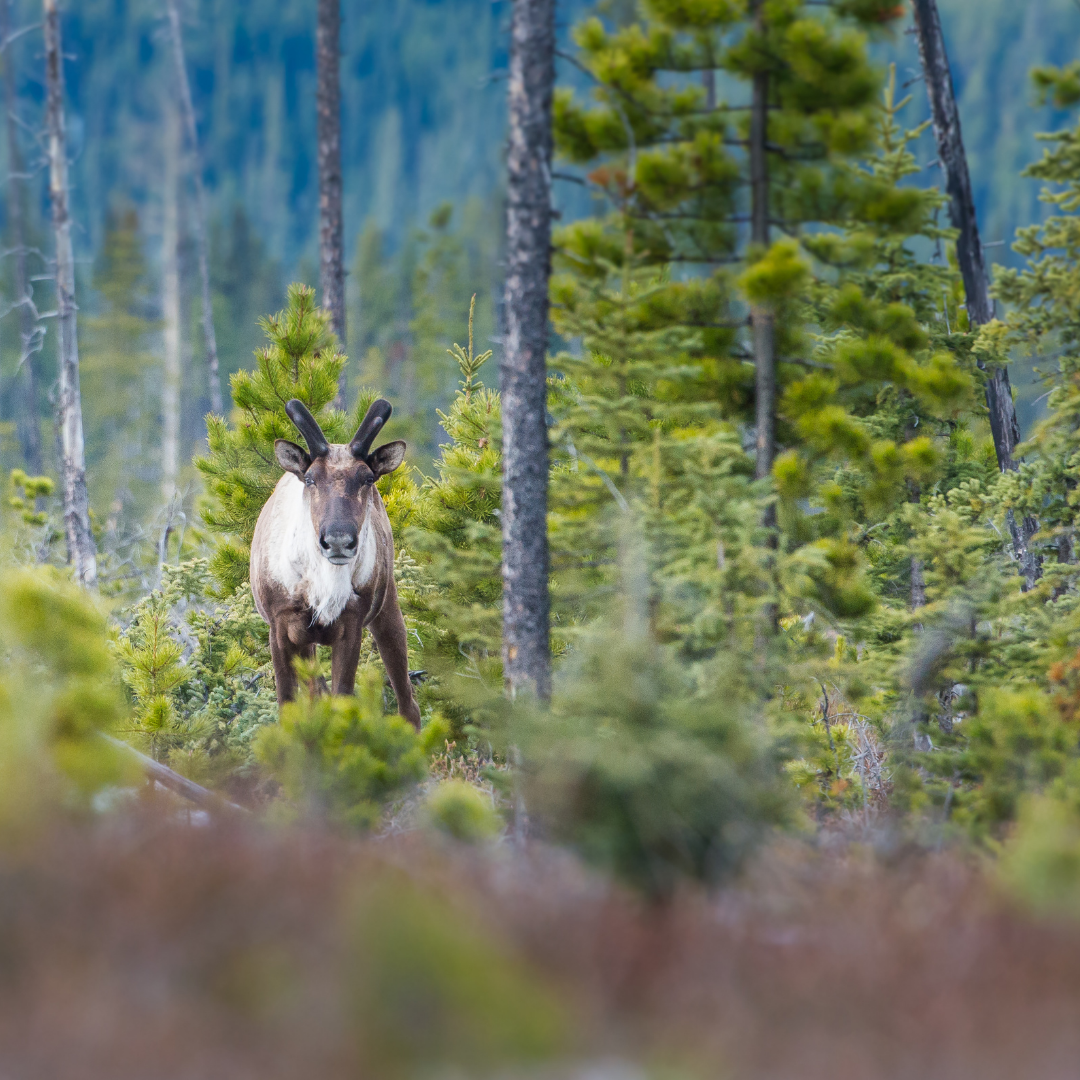Woodland Caribou (Boreal Population)

By Caitlyn Anhorn
- Scientific Name: Rangifer tarandus caribou
- SARA Status: Threatened
- COSEWIC Status: Threatened
- COSEWIC Range: Alberta, British Columbia, Manitoba, Newfoundland and Labrador, Northwest Territories, Ontario, Quebec, Saskatchewan, Yukon
Often mistaken for moose or elk, the Woodland caribou is a large mammal species that is symbolized on the Canadian quarter. They are an iconic species that roam the boreal forest as an indicator and an umbrella species and they play a critical role to many Indigenous communities across the land.

Unlike other ungulate species such as deer, moose, and elk, both female and male Woodland caribou grow antlers. The females lose their antlers after giving birth in early summer, while males lose theirs after mating in late fall.
The boreal population of Woodland caribou require large, and untouched pieces of old-growth boreal forest to survive. Old-growth forests are important because this is where caribou’s main food source, lichen, can be found. Lichen grows very slowly in the boreal forest and its wetlands. It takes advantage of the conditions that most plants cannot endure such as low nutrients, light, and/or water.
Woodland caribou do not migrate like Barren-ground caribou, their relatives, but they live in the boreal forest during summer and winter. They are well adapted for surviving the harsh Saskatchewan winters. They have long legs for tracking through the snow, a thick layer of insulation in their winter coat, large, hollow hooves to scoop up lichen from under the snow whish also aid in winter travel.
Unfortunately, many of the Woodland caribou populations across the country are in decline. They have been listed as Threatened on the federal Species at Risk Act (SARA) since 2003. In Saskatchewan, it is thought that the population in the most northerly part of the province (SK1 conservation unit) is currently stable4 and traditional knowledge suggests that the populations in the more southern extent of the province’s caribou range (SK2 conservation unit) are in decline.2,3
Threats: There are a few major threats that impact Woodland caribou and their habitat. Disturbance from logging, roadbuilding, mining, and oil and gas development creates clearances that not only attract predators but also wipe out the caribou’s main food source: lichen.
Time will tell how climate change will affect Woodland caribou, but negative impacts are likely. As seasons shift and change, forest composition changes, and/or food sources change, Woodland caribou will undoubtedly be impacted.
For more information about threats to Woodland caribou, click here.
What’s being done: Woodland caribou are protected federally as a threatened species on the Species at Risk Act (SARA). In addition to the federal Recovery Strategy under SARA’s Section 65 from 2012 and the provincial Conservation Strategy from 2013, the Government of Canada and the Government of Saskatchewan signed a Conservation Agreement that falls under Section 11 of SARA. Within this Agreement, range plans have been (and are being) developed in Saskatchewan.
While the range plans were first considered a hopeful step, recent actions made by both provincial and federal governments have made it clear that the range plans and the intentions behind them are eroding. As a national organization, Canadian Parks and Wilderness Society (CPAWS) is gravely concerned about the integrity of these processes that are meant to protect species at risk across Canada.
Resources
(1) Woodland Caribou, Boreal population (Rangifer tarandus caribou): amended recovery strategy 2020
